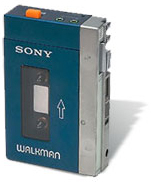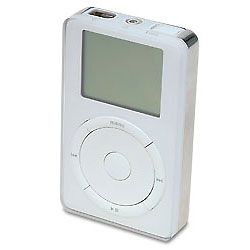|
The 50 greatest gadgets of the past 50 years
(PC World)
Updated: 2005-12-27 11:29
We're living in the golden age of the gadget. Don't believe it? Check your
pockets. Odds are you're carrying a portable music player, an electronic
organizer, a keychain-size storage device, a digital camera, or a cell phone
that combines some or all of these functions. And you'd probably be hard-pressed
to live without them.
At PC World, we'd be lost without these things. We don't merely test and
write about digital gear, we live and breathe the stuff. In honor of this raging
gizmo infatuation, we polled our editors and asked them to name the top 50
gadgets of the last 50 years.
The rules? The devices had to be relatively small (no cars or big-screen TVs,
for example), and we considered only those items whose digital descendants are
covered in PC World (cameras, yes; blenders, no). We rated each gadget on its
usefulness, design, degree of innovation, and influence on subsequent gadgets,
as well as the ineffable quality we called the "cool factor." Then we tallied
the results.
After a lot of Web surfing, spreadsheet wrangling, and some near fistfights,
we emerged with the following list. Some items in our Top 50 are innovative
devices that appeared briefly and then were quickly consigned to museums and
future appearances on eBay, but whose influence spread widely. Others are
products we use every day--or wish we could.
With the holidays in full swing, and as folks shop for the right gear to give
their loved ones, join us as we visit with the ghosts of gadgets past and
present.
1. Sony Walkman TPS-L2 (1979)

TPS-L2 headphone
Stereo Walkman, photographed July 1979. Photo courtesy Sony
Electronics | Portable music players are so cheap
and ubiquitous today that it's hard to remember when they were luxury items,
widely coveted and often stolen. But when the blue and silver Walkman debuted in
1979, no one had ever seen anything quite like it. The $200 player virtually
invented the concept of "personal electronics."
The first Walkman (also branded as the Stowaway, the Soundabout, and the
Freestyle before the current name stuck) featured a cassette player and the
world's first lightweight headphones. Apparently fearful that consumers would
consider the Walkman too antisocial, Sony built the first units with two
headphone jacks so you could share music with a friend. The company later
dropped this feature. Now, more than 25 years and some 330 million units later,
nobody wonders why you're walking down the street with headphones on. Learn more
in Sony's history of the Walkman. PCW photo by Rick Rizner; Walkman courtesy of
Melissa Perenson.
2. Apple iPod (2001)

Apple iPod
(2001) | If the Walkman is the aging king of
portable media players, Apple's iPod is prince regent. It rules the realm of
digital music like no other device: According to the NPD Group, more than eight
out of ten portable players sold at retail by mid-2005 were iPods. Yet when the
$399 iPod first appeared in October 2001, it was nothing special. It featured a
5GB hard drive and a mechanical scroll wheel, but worked only with Macs. A
second model released the following July offered a 20GB hard drive, a
pressure-sensitive touch wheel, and a Windows-compatible version. But the
third-generation player, which appeared in April 2003, proved the charm: A 40GB
drive, built-in compatibility with Windows and Mac, support for USB connections,
and a host of other small improvements made it wildly popular, despite its
relatively high price and poor battery life. Now the fifth-generation iPod
threatens to do the same thing for a new breed of portable video players. The
iPod is dead; long live the iPod. Read more in Dennis Lloyd's Brief History of
the iPod. PCW photo by Rick Rizner; iPod courtesy of Michael Kubecka.
3. (Tie) ReplayTV RTV2001 and TiVo HDR110 (1999)

ReplayTV RTV2001
and TiVo HDR110 (1999) |
The appearance of the first ReplayTV and TiVo models--the pioneering Gemini
of digital video recording--in the number three spot on our list may be a
measure of how much we all hate TV commercials. The concept is simple: Digitize
the TV signal and stream it to an internal hard drive, so the user can pause,
rewind, fast-forward, or record programs at will. For the first time, users
flummoxed by their VCRs (#29) could record an entire season of shows with a few
clicks of the remote. And yes, it may be cheating to count these two products as
one, but they appeared at virtually the same time, and each brought different
yet important strengths to the DVR table. TiVo undoubtedly won the
brand-recognition competition: When Janet Jackson suffered her infamous
"wardrobe malfunction" at the 2004 Super Bowl, thousands of viewers "TiVo'd
it"--over and over and over. ReplayTV, on the other hand, was more aggressive
with commercial-skipping and networking features. In any event, the success of
these products may be their undoing, as digital video recorders become a
standard feature of cable and satellite set-top boxes. Eric W. Lund has more
than you'd probably want to know about earlier models of both.
|